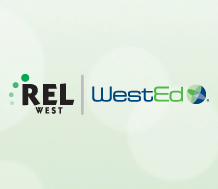Learn About the Central Valley Rural Education and Health Alliance
Posted on

REL West partners with regional, state, and district research alliances of diverse education stakeholders to address their specific education challenges. Read this Q&A with WestEd Senior Research Associate BethAnn Berliner on one such alliance she will be facilitating — the Central Valley Rural Education and Health Alliance, which draws on research and uses data to inform improvement efforts and track outcomes.
Tell us a little about the alliance, the region, and the pressing issues you’ll be addressing.
Our alliance is focused on the health and education outcomes of students from schools located in small, rural, high-poverty communities of the California Central Valley. The alliance will include the California School-Based Health Alliance — a statewide nonprofit organization committed to getting more health services in schools; teams of health care administrators and providers from school-based health clinics (SBHCs) that are co-located on elementary school campuses; and the teachers and administrators from those hosting schools.
Students in Fresno and Tulare counties, where the work will initially take place, struggle with poor health and childhood diseases, largely due to poverty and to air pollution from the region’s agribusiness. In addition, the region’s students have relatively poor academic outcomes overall, including below average high school graduation rates. Our alliance will be working with the local SBHCs and schools to collaboratively address some pressing health and education issues.
What role in the community do school-based health clinics typically play?
SBHCs provide critical services — including medical, dental, optometric, and mental health services — to underserved communities. In rural areas, they are sometimes the only source of medical care and social service support other than a regional hospital. The SBHCs’ services are particularly critical for children and adolescents, as research has indicated that physically and emotionally healthy students are more successful learners and, conversely, that poor health is associated with poor education outcomes.
How will the alliance be engaging the clinics and the schools in new ways?
While SBHCs and schools are co-located on the same campuses and serve the same students, they don’t necessarily work together even on issues that matter to both of them, such as attendance, engagement, behavior, learning, and family involvement. A primary goal of our alliance is to build collaborative practices between SBHCs and schools, so health care professionals and educators can maximize their impact and provide effective, complementary health and education supports for students — particularly during the foundational preK–grade 3 span.
The work is still taking shape, but our partners have identified some initial high-priority issues that we’ll be addressing in various ways, such as reducing chronic absence and promoting kindergarten readiness. We also want to promote data sharing across the health and education systems in order to get a more complete picture of students’ needs and outcomes.
